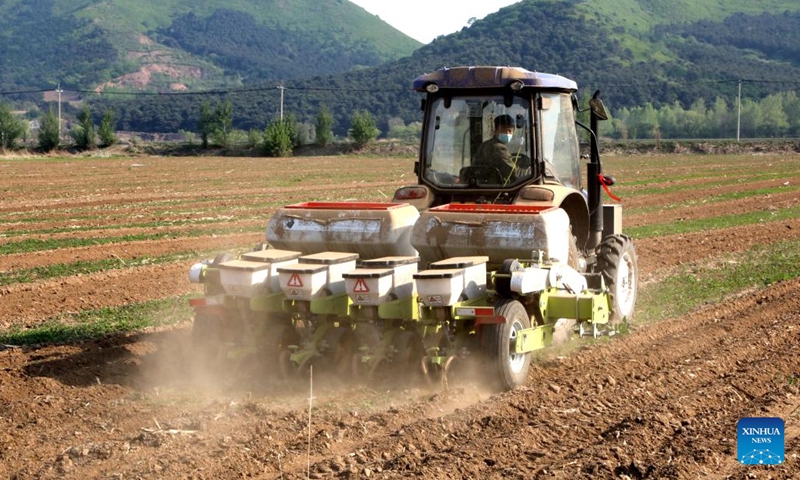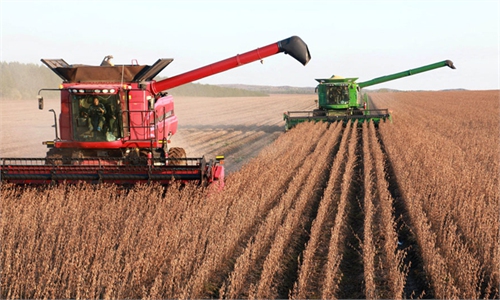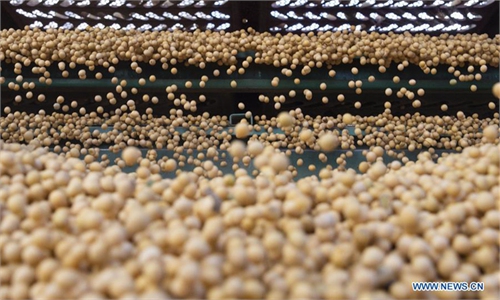
A farmer operates a machine to sow soybean seeds in a field in Fanhe Township of Tieling, northeast China's Liaoning Province, May 11, 2022. Liaoning has stepped up efforts on farming activities as the temperature rises recently. By May 17, the province's spring sowing area of crops has reached 48,645,000 mu (3,243,000 hectares).(Photo: Xinhua)
The Dalian Commodity Exchange (DCE) on Monday started the trading of three types of soybean and soybean oil options, a major step in China's intensifying efforts to ensure food supply and bolster its pricing power and risk control capabilities in a volatile global market.
With the approval of the China Securities Regulatory Commission, soybean 1, soybean 2 and soybean oil options were listed on the DCE on Monday. The three options include a total of 840 trading contracts, among which 160 were listed for soybean 1 options, 408 were listed for soybean 2 options and 272 were for soybean oil options.
These options cover China's entire soybean industry. Soybean 1 refers to domestic soybeans and soybean 2 refers to imported soybeans. These two categories constitute the raw materials for the nation's soybean industry, according to China Media Group.
Adding to previously listed soybean-related options, the new options on Monday offer the industry a set of complete, sophisticated pricing and risk management tools, experts said.
"The soybean sector is highly marketized, with multiple sources of domestic and foreign risks," said Li Guoxiang, a research fellow at the Rural Development Institute under the Chinese Academy of Social Sciences.
"Soybean options offer a new hedging tool for the industry. With controllable risks, market players, including producers, processors and distributors, could better perform their own functions to ensure market stability," Li told the Global Times on Monday.
A more sound and mature commodity market could guide production, imports and exports, as well as help adjust supply-demand relations, said Li.
Such a market is also very significant to China's grain security, given that the country relies heavily on imported soybeans and stable prices are crucial to ensure supply, according to Li.
China imported 96.52 million tons of soybeans in 2021, worth $53.5 billion, per data from the General Administration of Customs. Imported soybeans have accounted for over 80 percent of China's total consumption in the past 10 years, according to media reports.
Soybeans are not only a grain crop but also an edible oil plant and an important ingredient in non-staple foods.
The derivatives market is seeking to offer new risk-management and hedging tools to promote the sector's stable, sound development.
The DCE has facilitated the launch of 57 "insurance plus futures" projects for soybeans since 2015, involving 8.8 million mu (587,000 hectares) of planting area and 1.37 million tons of output, benefiting 284,700 households, according to the exchange.
Since a soybean meal option was listed in 2017, China's commodity options market has gradually developed a relatively sound regulatory system, which has created an institutional guarantee for listing of the new options.
According to the DCE, the newly listed options will be traded at night starting on Monday, and the holding limit of soybean 1 option is 15,000 lots, with a limit of 20,000 lots for either soybean 2 or soybean oil options.
Global Times



